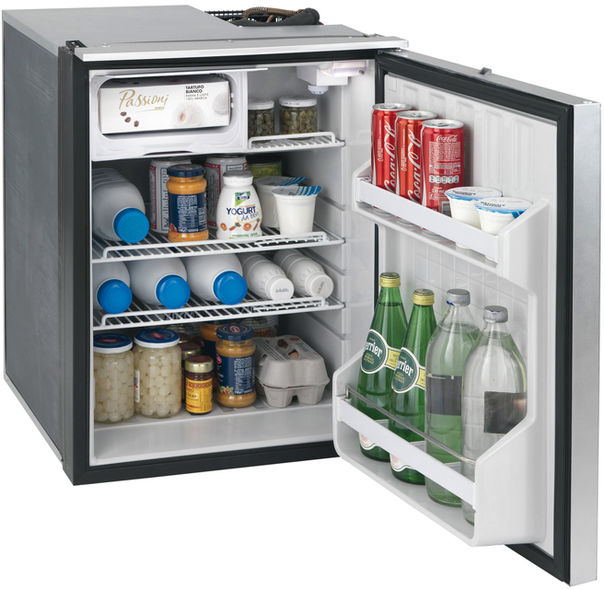
Issue #: 145
Published: January / February 2016
- Price per issue - digital : 5.40€Digital magazine
- Price per issue - print : 6.20€Print magazine
- Access to Multihulls World digital archives Digital archives
So what’s the secret to successful cruising? There are so many answers, most depending on the length of the cruise, both in time and distance. Some things are obvious, such as an indestructible autopilot. Next on the list, a good-sized, seaworthy dinghy with a decent outboard motor. And then there’s the cooling. No, not air conditioning, which is now a houseboat-style trend that boat manufacturers seem unable to resist. No, we’re talking about the simple refrigerator. Whether top opening or front, air-cooled or seawater, modest size or gigantic, it can get really confusing. Let’s take a look.
It’s been a good thirty years since we gave up on having to hunt for a big block of ice every time we pulled in to port, and we certainly don’t miss that. The arrival of mechanical cooling brought us freedom and self-sufficiency. Sure, for the first few years, electrical consumption drove us to run the motor for a few extra hours. But here in 2015, the surface area of the solar panels on our beautiful catamarans liberates us from this less than ecologically sound requirement. If we keep the number of times we open and close it every day to a minimum compared to at home, and have a good-quality, well-insulated unit, we can have hassle-free convenience.
But watch out, boatbuilders frequently offer the option of a freezer. In reality, these are just ice boxes. Going down to a temperature of -18°C, they can keep frozen food frozen indefinitely, or keep the fish you have caught good for a few days. But they don’t go down to -30°C like a proper freezer which will conserve suitably-prepared food almost until the end of time. But the “freezer compartment” inside a fridge, only allows foodstuffs to be kept for between two days and four weeks, depending on whether it goes down to -6°C or -12°C. Having clarified this, the ice box perfectly fulfills the requirements for blue water cruising: varied and quality menus even after all the fresh victuals have been used up. You can enjoy a good steak mid-ocean, and make that fish that you suddenly caught after days without a bite last a bit longer! But remember that the insulation for a freezer needs to be twice as thick as that of a refrigerator. Also, for the same overall volume inside the boat, the usable volume can vary significantly. So where a refrigerator might provide 130 liters of space, a freezer will only have 95 liters for the same amount of space taken up on board.

A traditional-type refrigerator has the advantage of being easy to open and you can quickly find what you are looking for.
Of course, there’s the ongoing debate concerning top-opening vs. front-opening. The former theoretically loses less cold air. But they need to be open for longer, while you dive down to the bottom in search of that last pack of butter, negating the advantage. When you add in the amount of countertop which is lost to the lid, which has to be kept clear for opening, it’s easy to see why front-opening fridges (like at home) are now in the majority in our galleys. Except for those who love to keep a whole watermelon chilled! But even they enjoy having traditional fridges, which are no longer just the preserve of superyachts. They can now be found on our 40-45 foot catamarans, along with all the benefits that they bring. The price for specific “marine” equipment can’t be ignored, even if, respecting the environment, Multihulls World doesn’t subscribe at all to the principal of, “if it’s bust, change it. It’ll be cheaper!” Technically, an uprated battery bank and a dedicated 110 or 220V inverter is all ...
What readers think
Post a comment
No comments to show.